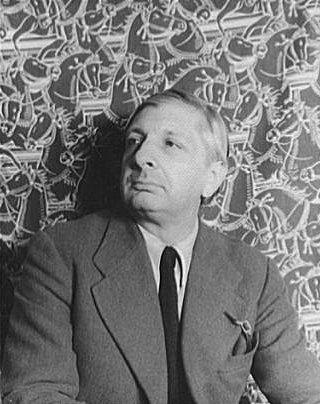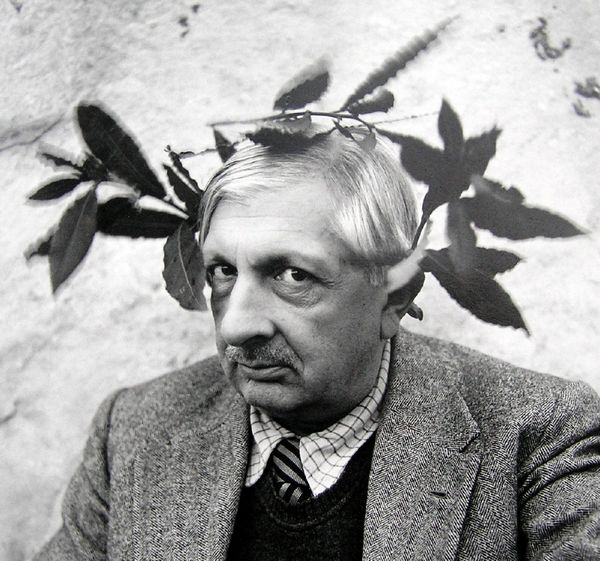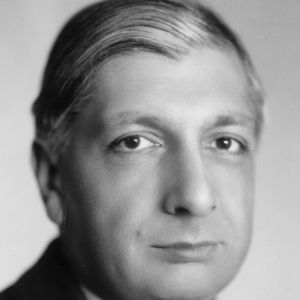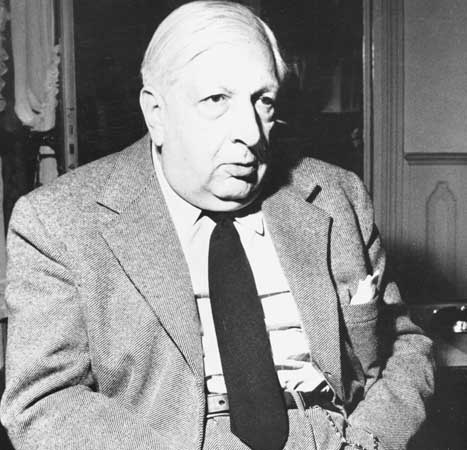Giorgio de Chirico (Giorgio de Chirico)

De Chirico was born in Volos, Greece, to a Genovese mother and a Sicilian father. After studying art in Athens—mainly under the guidance of the influential Greek painter Georgios Roilos and Georgios Jakobides—and Florence, he moved to Germany in 1906, following his father’s death in 1905. He entered the Academy of Fine Arts in Munich, where he read the writings of the philosophers Nietzsche, Arthur Schopenhauer and Otto Weininger and studied the works of Arnold Böcklin and Max Klinger. He returned to Italy in the summer of 1909 and spent six months in Milan. At the beginning of 1910, he moved to Florence where he painted the first of his ‘Metaphysical Town Square’ series, The Enigma of an Autumn Afternoon, after the revelation he felt in Piazza Santa Croce. He also painted The Enigma of the Oracle while in Florence. In July 1911 he spent a few days in Turin on his way to Paris. De Chirico was profoundly moved by what he called the ‘metaphysical aspect’ of Turin: the architecture of its archways and piazzas. It was the city of Nietzsche. De Chirico moved to Paris in July 1911, where he joined his brother Andrea. Through his brother he met Pierre Laprade, a member of the jury at the Salon d’Automne, where he exhibited three of his works: Enigma of the Oracle, Enigma of an Afternoon and Self-Portrait. During 1913 he exhibited paintings at the Salon des Indépendants and Salon d’Automne; his work was noticed by Pablo Picasso and Guillaume Apollinaire, and he sold his first painting, The Red Tower. In 1914, through Guillaume Apollinaire, he met the art dealer Paul Guillaume, with whom he signed a contract for his artistic output. At the outbreak of the First World War, he returned to Italy. Upon his arrival in May 1915, he enlisted in the Italian army, but he was considered unfit for work and assigned to the hospital at Ferrara. He continued to paint, and in 1918, he transferred to Rome. From 1918 his work was exhibited extensively in Europe.
De Chirico is best known for the paintings he produced between 1909 and 1919, his metaphysical period, which are memorable for the haunted, brooding moods evoked by their images. At the start of this period, his subjects were still cityscapes inspired by the bright daylight of Mediterranean cities, but gradually he turned his attention to studies of cluttered storerooms, sometimes inhabited by mannequin-like hybrid figures. In autumn, 1919, De Chirico published an article in Valori Plastici entitled “The Return of Craftsmanship”, in which he advocated a return to traditional methods and iconography. This article heralded an abrupt change in his artistic orientation, as he adopted a classicizing manner inspired by such old masters as Raphael and Signorelli, and became an outspoken opponent of modern art. In the early 1920s, the Surrealist writer André Breton discovered one of De Chirico’s metaphysical paintings on display in Paul Guillaume’s Paris gallery, and was enthralled. Numerous young artists who were similarly affected by De Chirico’s imagery became the core of the Paris Surrealist group centered around Breton. In 1924 De Chirico visited Paris and was accepted into the group, although the surrealists were severely critical of his post-metaphysical work. De Chirico met and married his first wife, the Russian ballerina Raissa Gurievich in 1925, and together they moved to Paris. His relationship with the Surrealists grew increasingly contentious, as they publicly disparaged his new work; by 1926 he had come to regard them as “cretinous and hostile”. They soon parted ways in acrimony. In 1928 he held his first exhibition in New York City and shortly afterwards, London. He wrote essays on art and other subjects, and in 1929 published a novel entitled Hebdomeros, the Metaphysician. In 1930, De Chirico met his second wife, Isabella Pakszwer Far, a Russian, with whom he would remain for the rest of his life. Together they moved to Italy in 1932, finally settling in Rome in 1944. In 1948 he bought a house near the Spanish Steps which is now a museum dedicated to his work.
In 1939, he adopted a neo-Baroque style influenced by Rubens. De Chirico’s later paintings never received the same critical praise as did those from his metaphysical period. He resented this, as he thought his later work was better and more mature. He nevertheless produced backdated “self-forgeries” both to profit from his earlier success, and as an act of revenge—retribution for the critical preference for his early work. He also denounced many paintings attributed to him in public and private collections as forgeries. He remained extremely prolific even as he approached his 90th year. In 1974 he was elected to the French Académie des Beaux-Arts. He died in Rome on November 20, 1978. His brother, Andrea de Chirico, who became famous as Alberto Savinio, was also a writer and a painter.
De Chirico won praise for his work almost immediately from the writer Guillaume Apollinaire, who helped to introduce his work to the later Surrealists. De Chirico strongly influenced the Surrealist movement: Yves Tanguy wrote how one day in 1922 he saw one of De Chirico’s paintings in an art dealer’s window, and was so impressed by it he resolved on the spot to become an artist—although he had never even held a brush. Other Surrealists who acknowledged De Chirico’s influence include Max Ernst, Salvador Dalí, and René Magritte. Other artists as diverse as Giorgio Morandi, Carlo Carrà, Paul Delvaux, Carel Willink, and Philip Guston were influenced by De Chirico.
Chirico’s style has influenced several filmmakers, particularly in the 1950s through 1970s. The visual style of the French animated movie Le Roi et l’oiseau, by Paul Grimault and Jacques Prévert, was influenced by de Chirico’s work, primarily via Tanguy, a friend of Prévert. The visual style of Valerio Zurlini’s film The Desert of the Tartars (1976) was influenced by De Chirico’s work. Michelangelo Antonioni, the Italian film director, also claimed to be influenced by De Chirico. Some comparison can be made to the long takes in Antonioni’s films from the 1960s, in which the camera continues to linger on desolate cityscapes populated by a few distant figures, or none at all, in the absence of the film’s protagonists. Modern photographer Duane Michals was also influenced by De Chirico. Writers who have appreciated De Chirico include John Ashbery, who has called Hebdomeros “probably…the finest [major work of Surrealist fiction].” Several of Sylvia Plath’s poems are influenced by De Chirico. In his bookBlizzard of One Mark Strand included a poetic diptych called “Two de Chiricos:” “The Philosopher’s Conquest” and “The Disquieting Muses.” The box art for Fumito Ueda’s PlayStation 2 game Ico used in Japan and Europe was strongly influenced by De Chirico. The front cover of New Order’s single “Thieves Like Us” is based on de Chirico’s painting The Evil Genius of a King.
In the paintings of his metaphysical period, De Chirico developed a repertoire of motifs—empty arcades, towers, elongated shadows, mannequins, and trains among others—that he arranged to create “images of forlornness and emptiness” that paradoxically also convey a feeling of “power and freedom”. According to Sanford Schwartz, De Chirico—whose father was a railroad engineer—painted images that suggest “the way you take in buildings and vistas from the perspective of a train window. His towers, walls, and plazas seem to flash by, and you are made to feel the power that comes from seeing things that way: you feel you know them more intimately than the people do who live with them day by day.” In 1982, Robert Hughes wrote that De Chirico
could condense voluminous feeling through metaphor and association … In The Joy of Return, 1915, de Chirico’s train has once more entered the city … a bright ball of vapor hovers directly above its smokestack. Perhaps it comes from the train and is near us. Or possibly it is a cloud on the horizon, lit by the sun that never penetrates the buildings, in the last electric blue silence of dusk. It contracts the near and the far, enchanting one’s sense of space. Early de Chiricos are full of such effects. Et quid amabo nisi quod aenigma est? (“What shall I love if not the enigma?”)—this question, inscribed by the young artist on his self-portrait in 1911, is their subtext.
In this, he resembles his more representational American contemporary, Edward Hopper: their pictures’ low sunlight, their deep and often irrational shadows, their empty walkways and portentous silences creating an enigmatic visual poetry.
Born
- July, 10, 1888
- Volos, Greece
Died
- November, 20, 1978
- Rome, Italy
Cemetery
- Chiesa di San Francesco a Ripa
- Lazio, Italy




